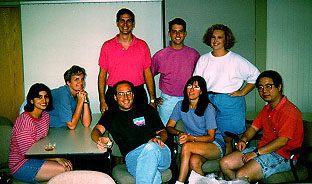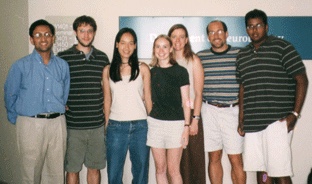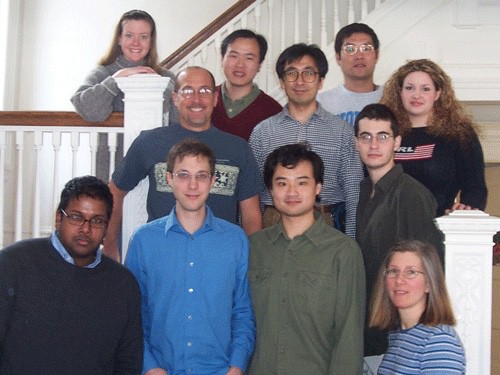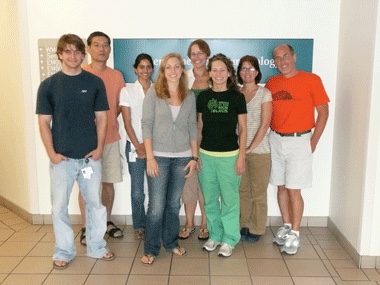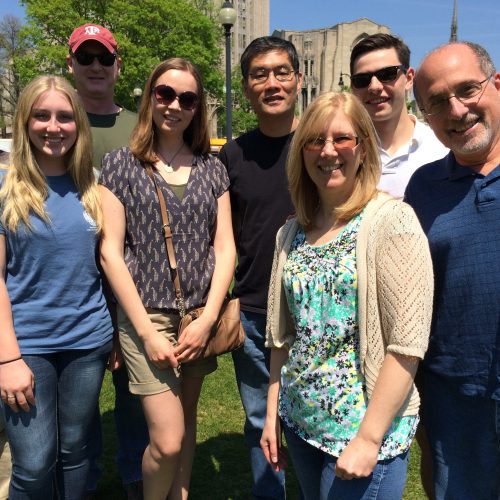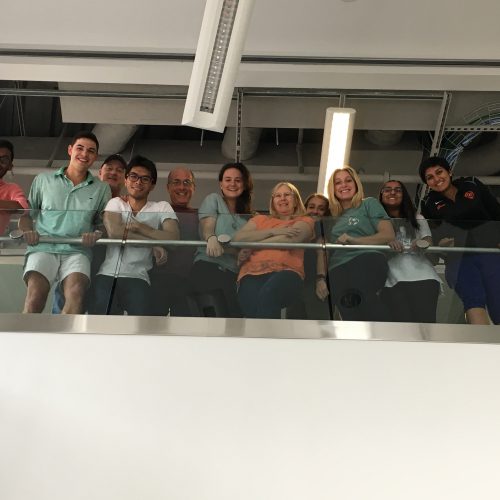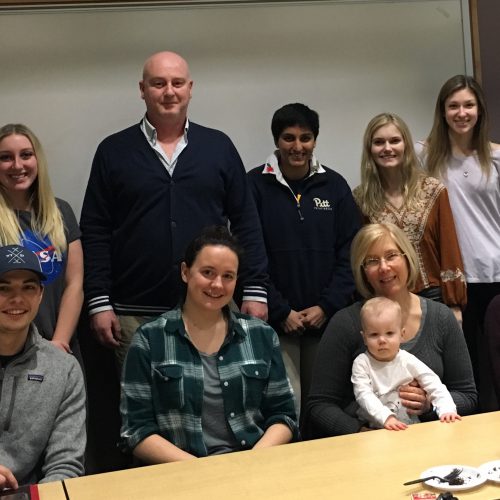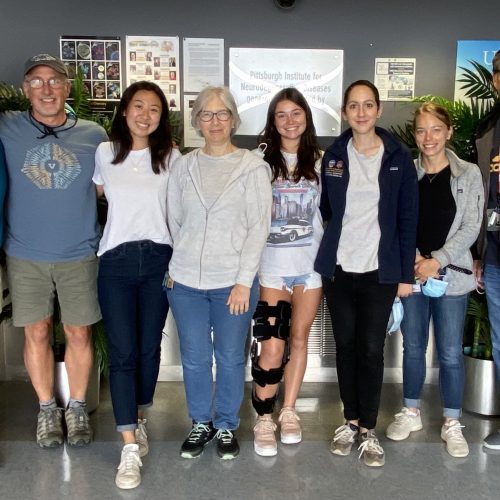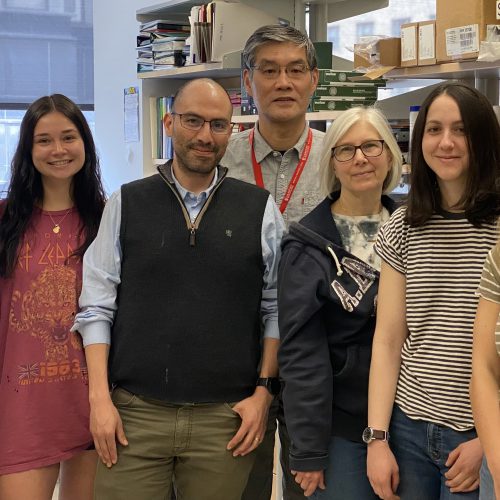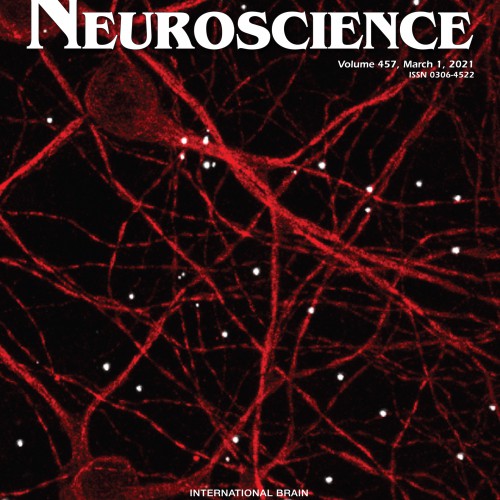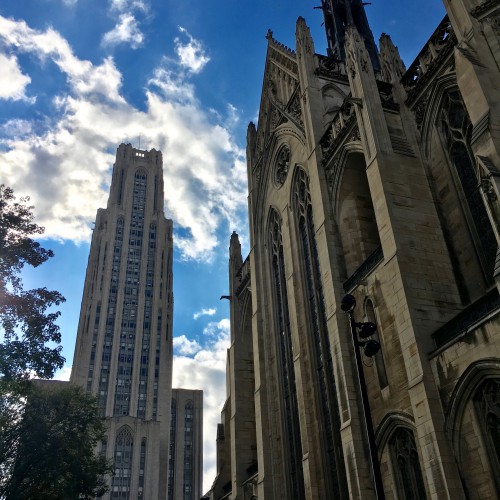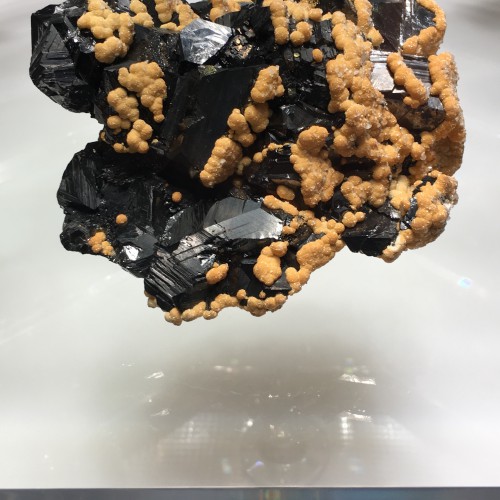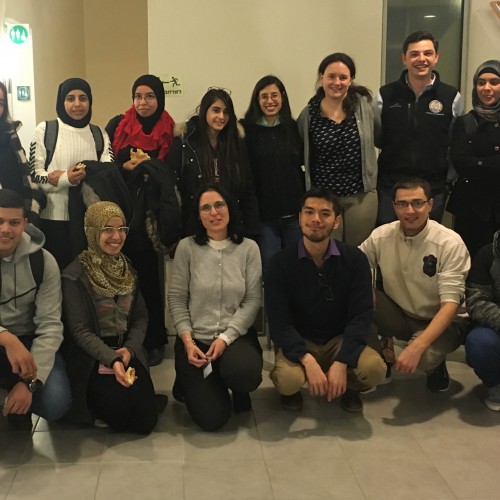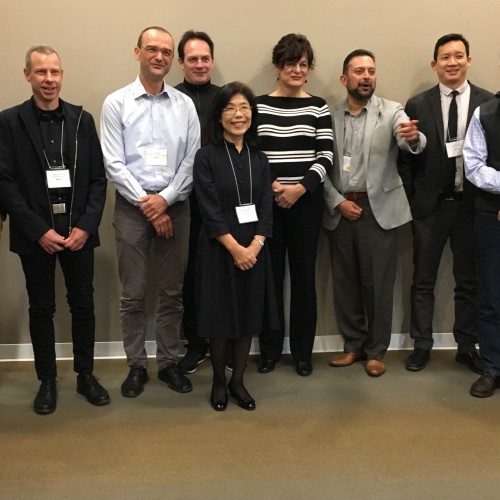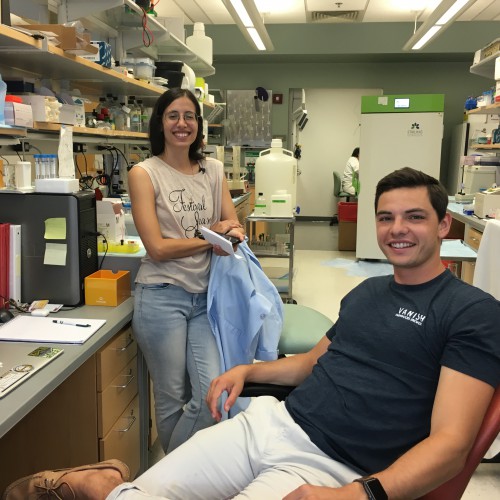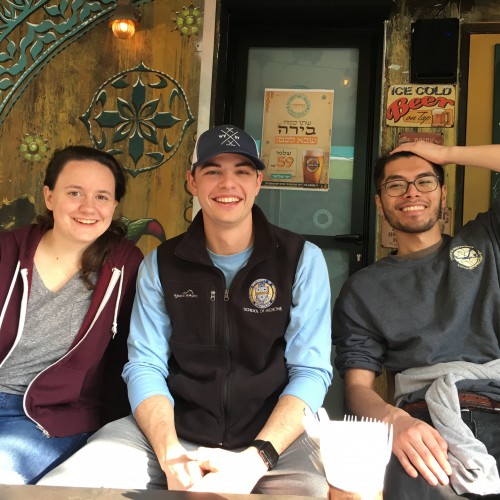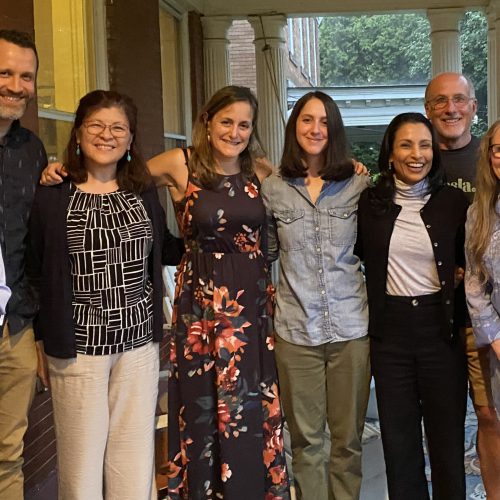Interests
Elias Aizenman was born and raised in Mexico City. He attended Boston University as an undergraduate, where he received training in neurobiology in the laboratory of Christopher Price, working on the retrograde axonal transport of free glycine in identified neurons of Aplysia. He also performed microbiological field work for Lynn Margulis in Laguna Figueroa, Baja California, Mexico. His graduate work was in toxicology at the Johns Hopkins University, where he studied the mechanism of anticholinesterase-induced generation of antidromic action potentials at the mouse neuromuscular junction with George Bierkamper and Elise Stanley. During his postdoctoral work with Stuart Lipton at Boston Children’s Hospital and Harvard Medical School, he discovered the redox modulatory site of the NMDA receptor in collaboration with Ralph Loring. With Paul Rosenberg, he demonstrated the oxidative conversion of L-DOPA to an excitotoxin. He began his independent career in the Department of Neurobiology at the University of Pittsburgh School of Medicine in 1989. In Pittsburgh, together with Ian Reynolds, Elias described the oxidative liberation of intracellular zinc as a critical component of neurotoxic cell signaling pathways. With Ed Levitan, he identified Kv2.1 as the channel responsible for the requisite loss of intracellular potassium during neuronal apoptosis.
Research in Elias’s laboratory is directed towards investigating cellular signaling processes leading to neuronal cell death. Cellular pathways leading to cell death are molecularly dissected in order to provide novel therapeutic targets to treat neurodegenerative disorders. This laboratory works on potential common final mediators of cell death signaling events that can be effectively targeted to treat neural disorders. This work is primarily focused on acute neuronal injury, such as stroke, although the results obtained from these studies have broader applications to more chronic/progressive neurodegenerative conditions.
Most recently, Elias has begun an NIH SBIR-funded collaboration with Julie Coleman (Celdara Medical, Lebanon, NH) and Brad Molyneaux (Brigham and Women's Hospital, Boston, MA) to move two of his patented, Kv2.1-directed neuroprotective peptides (CM-EA1 and CM-EA2, formerly TAT-C1aB and TAT-DP2) towards clinical use in acute stroke.
Finally, in addition to his position at Pitt, Elias also holds an adjunct appointment in the Department of Cell Biology and Physiology at Ben Gurion University. He collaborates there with Michal Hershfinkel and Israel Sekler on all things zinc.
Please note that the Aizenman laboratory will be shutting down operations in the next few months. As such, we are no longer accepting students or postdocs to our group.
Training
| BS | Biology | Boston University | 1981 |
| PhD | Toxicology | Johns Hopkins University | 1985 |
| Post-doctoral | Neuroscience | Harvard Medical School | 1985-1987 |
Positions Held
| Instructor | Harvard Medical School | 1987-1989 |
| Assistant Professor | Harvard Medical School | 1989 |
| Assistant Professor | University of Pittsburgh | 1989-1994 |
| Associate Professor | University of Pittsburgh | 1994-2001 |
| Professor | University of Pittsburgh | 2001- |
| Adjunct Professor | Ben Gurion University | 2010- |
Honors and awards
Summa Cum Laude with Distinction, Boston University (1981)
Phi Beta Kappa (1981)
Alumni Award in Biology, Boston University (1981)
NRSA in Developmental Neurology, Children’s Hospital and Harvard Medical School (1985-1987)
Research Fellowship, Fight for Sight (1985-1987)
BRRT Study Section, NIH (1994-1998)
Independent Investigator Award, NARSAD (1997)
Dozor Visiting Scholar, Ben Gurion University (2006)
President, International Society for Zinc Biology (2011-2013)
NOMD Study Section, NIH (2012-2018; Chair: 2017-2018)
William E. Brown Outstanding MSTP Mentor Award (2015)
Charles E. Kaufman New Initiative Award (2016; with Michael Palladino)
Dozor Visiting Scholar, Ben Gurion University (2017)
Dozor Visiting Scholar, Ben Gurion University (2020 - postponed due to Covid-19)
Philip Troen, MD, Excellence in Medical Student Research Mentoring Award (2021)
International Society for Zinc Biology Frederickson Prize (2024)
Gallery
Selected Publications
Kok M, Singh I, Aizenman E, Brodsky JL. Inefficient maturation of disease-linked mutant forms of the KCC2 potassium-chloride cotransporter correlates with predicted pathogenicity. J Biol Chem. 2025 Mar 10:108399. doi: 10.1016/j.jbc.2025.108399. Epub ahead of print. PMID: 40074080.
Hernandez-Espinosa DR, Medina-Ruiz GI, Scrabis MG, Thathiah A, Aizenman E. Proinflammatory microglial activation impairs in vitro cortical tissue repair via zinc-dependent ADAM17 cleavage of the CSF-1 receptor. J Neurochem. 2025 Feb;169(2):e16239. doi: 10.1111/jnc.16239. PMID: 39387604; PMCID: PMC11810582.
Bai Q, Shao E, Ma D, Jiao B, Scheetz SD, Hartnett-Scott KA, Ilin VA, Aizenman E, Kofler J, Burton EA. A human Tau expressing zebrafish model of progressive supranuclear palsy identifies Brd4 as a regulator of microglial synaptic elimination. Nat Commun. 2024 Sep 18;15(1):8195. doi: 10.1038/s41467-024-52173-0. PMID: 39294122.
Gale J, Aizenman E. The physiological and pathophysiological roles of copper in the nervous system. Eur J Neurosci. 2024 May 15. doi: 10.1111/ejn.16370. Epub ahead of print. PMID: 38747014.
Phillips MB, Povysheva NV, Harnett-Scott KA, Aizenman E, Johnson JW. State-specific inhibition of NMDA receptors by memantine depends on intracellular calcium and provides insights into NMDAR channel blocker tolerability. bioRxiv 2024.04.01.587624; doi: https://doi.org/10.1101/2024.04.01.587624
Kok M, Hartnett-Scott K, Happe CL, MacDonald ML, Aizenman E, Brodsky JL. The expression system influences stability, maturation efficiency, and oligomeric properties of the potassium-chloride co-transporter KCC2. Neurochem Int. 2024 Mar;174:105695. doi: 10.1016/j.neuint.2024.105695. Epub 2024 Feb 17. PMID: 38373478; PMCID: PMC10923169.
Gale JR, Hartnett-Scott K, Ross MM, Rosenberg PA, Aizenman E. Copper induces neuron-sparing, ferredoxin 1-independent astrocyte toxicity mediated by oxidative stress. J Neurochem. 2023 Oct;167(2):277-295. doi: 10.1111/jnc.15961. Epub 2023 Sep 13. PMID: 37702109.
Ross MM, Aizenman E. GluA1-Shank3 interaction decreases in response to chronic neuronal depolarization. Neurosci Lett. 2023 Jul 13;809:137305. doi: 10.1016/j.neulet.2023.137305. Epub 2023 May 18. PMID: 37210067; PMCID: PMC10330850.
Ross MM, Hernandez-Espinosa DR, Aizenman E. Neurodevelopmental Consequences of Dietary Zinc Deficiency: A Status Report. Biol Trace Elem Res. 2023 Dec;201(12):5616-5639. doi: 10.1007/s12011-023-03630-2. Epub 2023 Mar 25. PMID: 36964812.
Hernandez-Espinosa DR, Gale JR, Scrabis MG, Aizenman E. Microglial reprogramming by Hv1 antagonism protects neurons from inflammatory and glutamate toxicity. J Neurochem. 2023 Apr;165(1):29-54. doi: 10.1111/jnc.15760. Epub 2023 Jan 21. PMID: 36625847; PMCID: PMC10106429.
Krall R, Gale JR, Ross MM, Tzounopoulos T, Aizenman E. Intracellular zinc signaling influences NMDA receptor function by enhancing the interaction of ZnT1 with GluN2A. Neurosci Lett. 2022 Nov 1;790:136896. doi: 10.1016/j.neulet.2022.136896. Epub 2022 Oct 3. PMID: 36202195.
Bogdanovic M, Asraf H, Gottesman N, Sekler I, Aizenman E, Hershfinkel M. The ZIP3 Zinc Transporter Is Localized to Mossy Fiber Terminals and Is Required for Kainate-Induced Degeneration of CA3 Neurons. J Neurosci. 2022 Mar 30;42(13):2824-2834. doi: 10.1523/JNEUROSCI.0908-21.2022. Epub 2022 Feb 15. PMID: 35169020; PMCID: PMC8973278.
Asraf H, Bogdanovic M, Gottesman N, Sekler I, Aizenman E, Hershfinkel M. SNAP23 regulates KCC2 membrane insertion and activity following mZnR/GPR39 activation in hippocampalneurons. iScience. 2022 Jan 7;25(2):103751. doi: 10.1016/j.isci.2022.103751. PMID: 35118363; PMCID: PMC8800107.
Gottesman N, Asraf H, Bogdanovic M, Sekler I, Tzounopoulos T, Aizenman E, Hershfinkel M. ZnT1 is a neuronal Zn2+/Ca2+ exchanger. Cell Calcium. 2022 Jan;101:102505. doi: 10.1016/j.ceca.2021.102505. Epub 2021 Nov 23. PMID: 34871934.
Gale JR, Kosobucki GJ, Hartnett-Scott KA, Aizenman E. Imprecision in Precision Medicine: Differential Response of a Disease-Linked GluN2A Mutant to NMDA Channel Blockers. Front Pharmacol. 2021 Oct 28;12:773455. doi: 10.3389/fphar.2021.773455. PMID: 34776984; PMCID: PMC8581401.
Kowalczyk A, Gbadamosi O, Kolor K, Sosa J, Andrzejczuk L, Gibson G, St Croix C, Chikina M, Aizenman E, Clark N, Kiselyov K. Evolutionary rate covariation identifies SLC30A9 (ZnT9) as a mitochondrial zinc transporter. Biochem J. 2021 Sep 17;478(17):3205-3220. doi: 10.1042/BCJ20210342. PMID: 34397090.
Liu HY, Gale JR, Reynolds IJ, Weiss JH, Aizenman E. The Multifaceted Roles of Zinc in Neuronal Mitochondrial Dysfunction. Biomedicines. 2021 Apr 29;9(5):489. doi: 10.3390/biomedicines9050489.
Krall RF, Tzounopoulos T, Aizenman E. The Function and Regulation of Zinc in the Brain. Neuroscience. 2021 Mar 1;457:235-258. doi: 10.1016/j.neuroscience.2021.01.010.
Yeh, C.; Schulien, A.; Molyneaux, B.; Aizenman, E. Lessons from Recent Advances in Ischemic Stroke Management and Targeting Kv2.1 for Neuroprotection. International Journal of Molecular Sciences. 2020 Aug 25;21(17):E6107. doi: 10.3390/ijms21176107.
Aizenman, E., R.H. Loring, I.J. Reynolds and P.A. Rosenberg. The redox biology of excitotoxic processes: the NMDA receptor, TOPA quinone, and the oxidative liberation of intracellular zinc. Frontiers in Neuroscience - Special Issue: Excitotoxicity Turns 50. 2020, 14:778, DOI: 10.3389/fnins.2020.00778.
Schulien, A.J., C.-Y Yeh, B.N. Orange, O.J. Pav, M.P. Hopkins, A. Moutal, R. Khanna, D. Sun, J.A. Justice* and E. Aizenman.* Targeted-disruption of Kv2.1-VAPA association provides neuroprotection against ischemic stroke in mice by declustering Kv2.1 channels. Science Advances 01 Jul 2020: Vol. 6, no. 27, eaaz8110; DOI: 10.1126/sciadv.aaz8110 .
Krall, R.F., A. Moutal, M.B. Phillips, H. Asraf, J.W. Johnson, R. Khanna, M. Hershfinkel, E. Aizenman* and T. Tzounopoulos.* Synaptic zinc inhibition of NMDA receptors depends on the association of GluN2A with the zinc transporter ZnT1. Science Advances 03 Jul 2020: Vol. 6, no. 27, eabb1515; DOI: 10.1126/sciadv.abb1515
Aizenman E. Zinc signaling in the life and death of neurons. In: Zinc Signals in Cellular Functions and Disorders. Second Edition. Fukada, T. and T. Kambe, eds. Springer, January 2020, Chapter 9; pp. 165-185.

